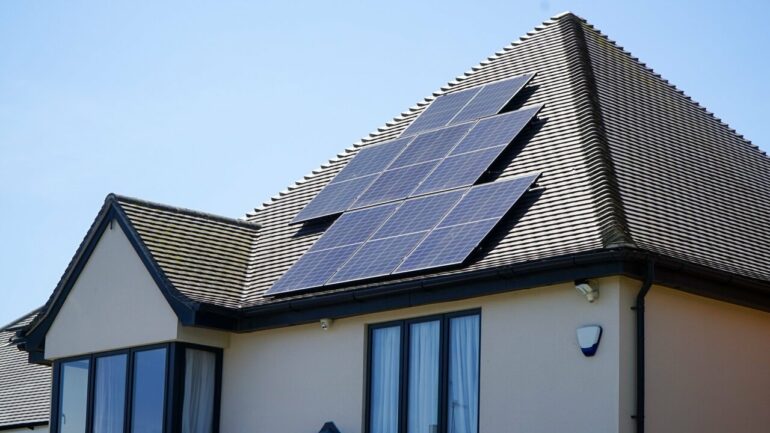Rooftop solar panels become more energy effective if placed accurately
Mohammad Aslani, researcher in geographical information science at University of Gävle, has developed AI methods that in several steps improve the placement of rooftop solar panels.
Determining how much electricity rooftop solar panels can produce is difficult. For individual house owners, solar panels can be a good investment for their house. The challenge is to decide on the number of panels and how to position them to optimize the amount of electricity that can be produced on the roof.
“Too many solar panels on the roof generates a surplus of electricity, but it does not give the owner a lot of money when it is sold on the marked. Too few solar panels, however, does not generate enough electricity in relation to the total cost of investment. Solar panels are expensive, so we need to find a balance to make the investment as profitable as possible for the consumer,” Mohammad Aslani says
Within the framework of Mohammad Aslani’s doctoral thesis, Aslani and Stefan Seipel, professor in computer science, have developed AI methods which can be used in a process containing several steps to assess the potential of rooftop solar panels. These methods can be useful on a micro level for individual house owners, as well as on macro levels for urban planners and real estate companies.
“This research is useful as a basis for decision making. If an urban planner wants to assess the potential in solar energy for an entire neighborhood, it is crucial that the assessment is as accurate as possible, both for financial and environmental reasons,” Mohammad Aslani says.
By using publicly available cadastral maps, aerial photographs and point target data, the AI engine can, in a first step, identify all the roofs in a photo of a neighborhood. In the next step, it assesses the slope and orientation of the roofs. In a third step, it considers the structure of each roof, including chimneys and angles. Finally, it suggests how many solar panels should be installed on each roof, and how they should be positioned to be as efficient as possible. In total, six different AI engines are used: two for each of the three steps of the process outlined above.
In two case studies, one in Gothenburg and one in Uppsala, the new AI methods proved to be more accurate than previous ones.
“Existing methods tend to be too optimistic; they overestimate the energy efficiency since they are not as detailed as ours. They do not take spatial details that affect or obstruct the placement of the solar panels into account as much as our methods do,” Stefan Seipel says.
The next step in Mohammad Aslanis’ research is to develop the AI to make it weigh in the energy demand of a building when calculating the number of solar panels.
“I would also like to turn our thinking around and instead do research on how to build buildings and roofs to get the most out of solar panels,” Mohammad Aslani concludes.
The study is published as part of the Proceedings of the 8th International Conference on Geographical Information Systems Theory, Applications and Management.
More information:
Mohammad Aslani et al, A Spatially Detailed Approach to the Assessment of Rooftop Solar Energy Potential based on LiDAR Data, Proceedings of the 8th International Conference on Geographical Information Systems Theory, Applications and Management (2022). DOI: 10.5220/0011108300003185
Provided by
University of Gävle
Citation:
AI makes rooftop solar panels more efficient (2022, December 13)



